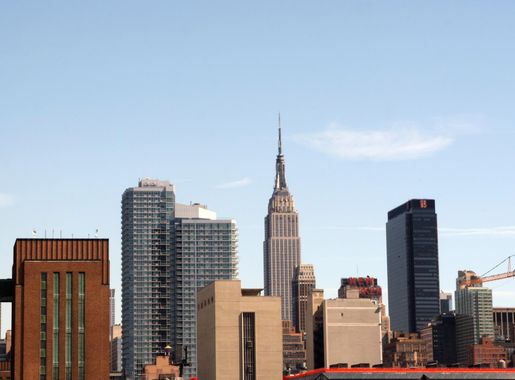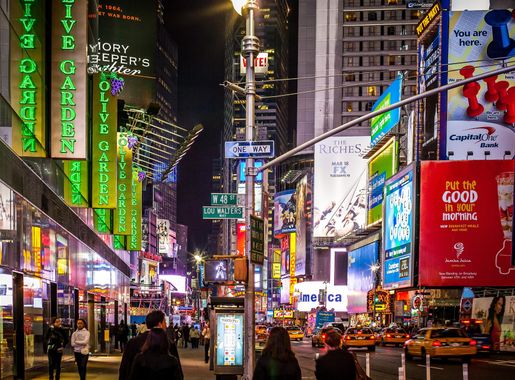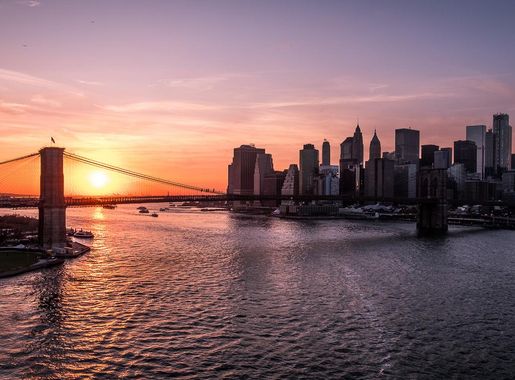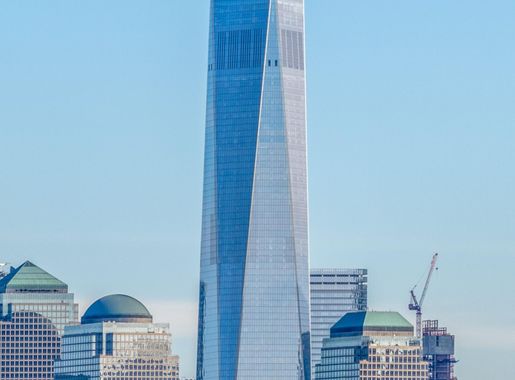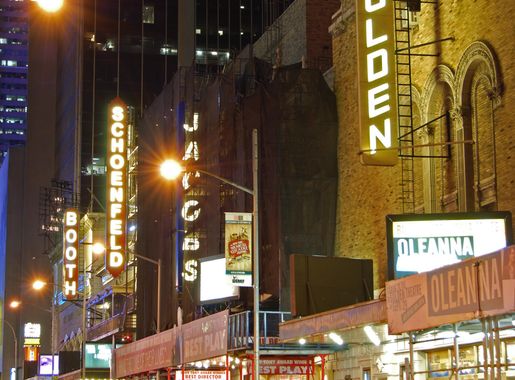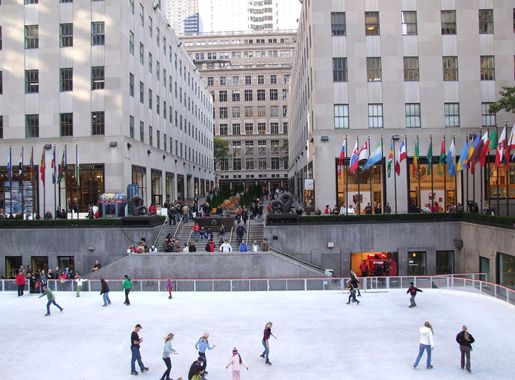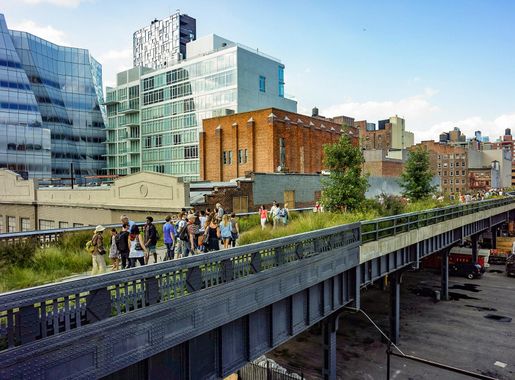
The Magic of Manhattan: The Heartbeat of New York City
Discover the heartbeat of New York City in Manhattan, where world-famous landmarks, diverse cuisines, and vibrant cultural scenes await you at every turn.
Manhattan, the iconic borough of New York City, is a melting pot of culture, history, and modernity. This vibrant neighbourhood is home to some of the world's most famous landmarks, from the towering Empire State Building to the sprawling Central Park. As you wander through its streets, you will encounter a blend of architectural marvels, upscale shopping districts, and world-renowned theaters that collectively tell the story of New York City's evolution. Times Square, often referred to as 'The Crossroads of the World,' dazzles visitors with its neon lights and bustling atmosphere. This entertainment hub is packed with Broadway theaters, making it a must-visit for anyone looking to experience the magic of live performances. Meanwhile, the Museum of Modern Art (MoMA) and the Metropolitan Museum of Art offer a feast for art enthusiasts, showcasing works that span centuries and continents. For a taste of Manhattan's diverse culinary scene, head to neighborhoods like Chinatown, Little Italy, and the East Village. Each area offers a unique gastronomic experience, from authentic dim sum to classic Italian pastries and trendy vegan eateries. Not to mention, the High Line, an elevated park built on a historic freight rail line, provides a serene urban escape with stunning views of the Hudson River. Whether you're a first-time visitor or a seasoned traveler, Manhattan's energy is contagious. From the financial buzz of Wall Street to the serene pathways of Central Park, every corner of this borough has a story to tell. Be prepared to be swept off your feet by the unparalleled charm and endless possibilities that Manhattan has to offer.
Local tips in Manhattan
- Start your day early to avoid the crowds at popular attractions like the Empire State Building and the Statue of Liberty.
- Purchase a MetroCard for convenient and cost-effective travel around the city.
- Visit Central Park for a relaxing break from the city's hustle and bustle; rent a bike or take a leisurely walk.
- Take advantage of free museum days and discount passes to explore Manhattan's rich cultural offerings.
- Wear comfortable walking shoes; Manhattan is best explored on foot to truly soak in its atmosphere.
The Magic of Manhattan: The Heartbeat of New York City
Manhattan, the iconic borough of New York City, is a melting pot of culture, history, and modernity. This vibrant neighbourhood is home to some of the world's most famous landmarks, from the towering Empire State Building to the sprawling Central Park. As you wander through its streets, you will encounter a blend of architectural marvels, upscale shopping districts, and world-renowned theaters that collectively tell the story of New York City's evolution. Times Square, often referred to as 'The Crossroads of the World,' dazzles visitors with its neon lights and bustling atmosphere. This entertainment hub is packed with Broadway theaters, making it a must-visit for anyone looking to experience the magic of live performances. Meanwhile, the Museum of Modern Art (MoMA) and the Metropolitan Museum of Art offer a feast for art enthusiasts, showcasing works that span centuries and continents. For a taste of Manhattan's diverse culinary scene, head to neighborhoods like Chinatown, Little Italy, and the East Village. Each area offers a unique gastronomic experience, from authentic dim sum to classic Italian pastries and trendy vegan eateries. Not to mention, the High Line, an elevated park built on a historic freight rail line, provides a serene urban escape with stunning views of the Hudson River. Whether you're a first-time visitor or a seasoned traveler, Manhattan's energy is contagious. From the financial buzz of Wall Street to the serene pathways of Central Park, every corner of this borough has a story to tell. Be prepared to be swept off your feet by the unparalleled charm and endless possibilities that Manhattan has to offer.
Iconic landmarks you can’t miss
Rockefeller Center
Discover the rich history, stunning architecture, and vibrant culture of Rockefeller Center, a must-visit landmark in the heart of New York City.
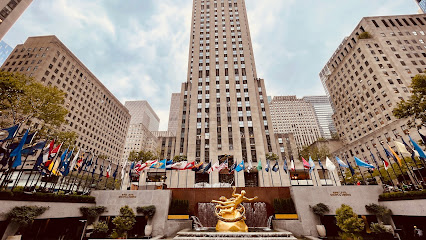
Empire State Building
Discover the breathtaking views and rich history of New York City's iconic Empire State Building, a symbol of architectural brilliance.
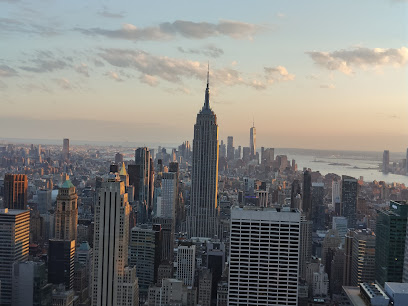
The Channel Gardens
Explore The Channel Gardens, a serene urban oasis at Rockefeller Center in Manhattan, where seasonal blooms and tranquil pathways await.

Soldiers' and Sailors' Monument
Explore the Soldiers' and Sailors' Monument in Riverside Park—an iconic tribute to Civil War heroes amidst New York City's rich historical landscape.
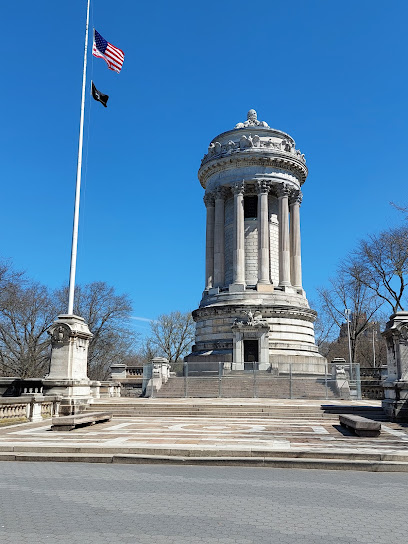
Portal Down to Old New York
Explore the historical charm of Portal Down to Old New York and immerse yourself in the stories that shaped Manhattan's vibrant history.

Dodge Monument
Explore the Dodge Monument, a historical landmark in Manhattan that celebrates General Grenville M. Dodge's legacy amidst the vibrant NYC atmosphere.
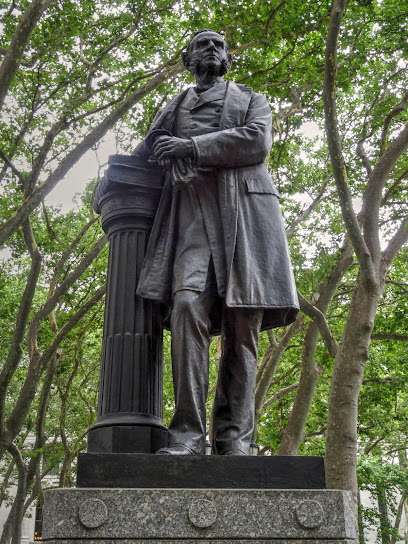
The Unique Building
Explore The Unique Building, a historical landmark in Manhattan that showcases remarkable architecture and rich stories of New York City's vibrant past.
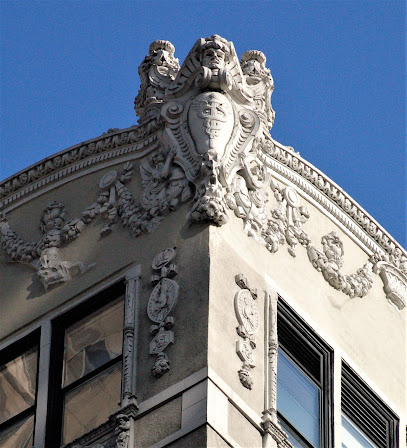
Manhattan Avenue Historic District
Explore the architectural elegance and rich history of the Manhattan Avenue Historic District in the vibrant heart of New York City.
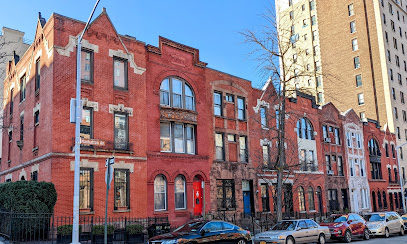
Riverside-West End Historic District
Discover the charm and history of Riverside-West End Historic District in Manhattan, featuring stunning architecture and a serene riverside park.
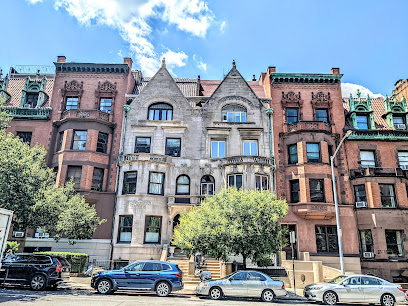
Graffiti in the city
Explore the captivating street art of Manhattan, where graffiti transforms the city into a vibrant canvas of creativity and expression.
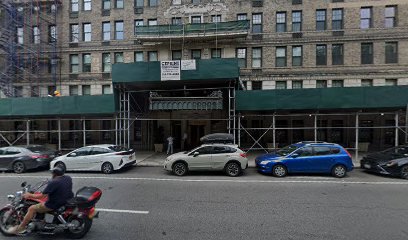
Unmissable attractions to see
Times Square
Discover the dazzling lights and vibrant energy of Times Square, the iconic heart of New York City and a must-visit for every traveler.
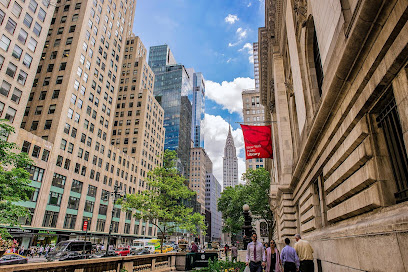
Rockefeller Center
Discover the iconic Rockefeller Center, a vibrant historical landmark in New York City known for its stunning architecture and cultural attractions.
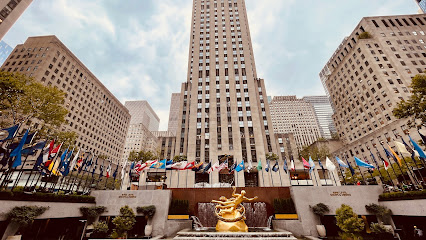
Empire State Building
Experience breathtaking views and rich history at the Empire State Building, a must-visit landmark in the heart of New York City.
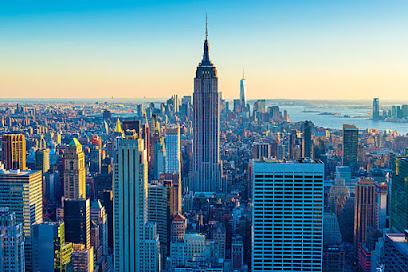
Top of The Rock
Experience the stunning 360-degree views of NYC from the iconic Top of The Rock Observation Deck at Rockefeller Center.
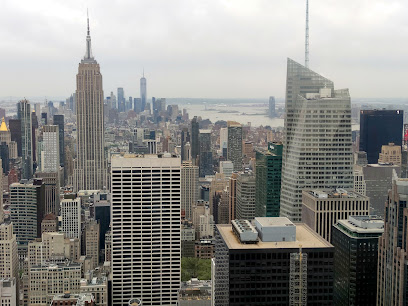
SUMMIT One Vanderbilt
Experience breathtaking views and innovative art at SUMMIT One Vanderbilt, New York City's premier observation deck and art museum.
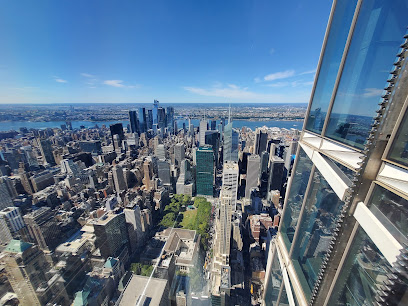
The Ride NYC
Explore New York City like never before with The Ride NYC, a unique blend of sightseeing and theatrical entertainment that promises a memorable adventure.
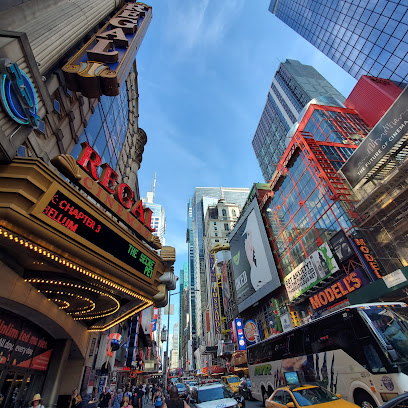
The Channel Gardens
Discover the tranquil beauty of The Channel Gardens, a stunning floral retreat in the heart of Manhattan, perfect for unwinding and enjoying iconic NYC scenery.

Town Square
Experience the vibrant culture and dynamic atmosphere of Town Square in the heart of New York City, a must-visit for every traveler.
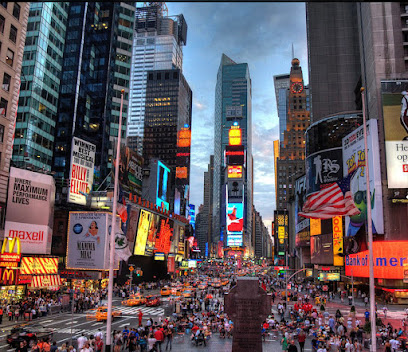
Questing NY
Unleash your adventurous spirit at Questing NY, a unique tourist attraction in Manhattan where exploration meets fun and discovery.
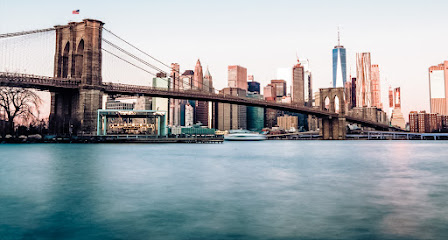
Essential places to dine
The Smith
Savor exquisite American cuisine at The Smith in Manhattan—your go-to spot for breakfast, brunch, lunch, and oysters.
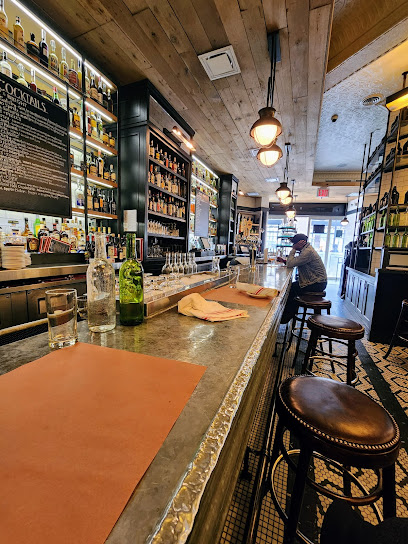
Gramercy Tavern
Experience exceptional American cuisine at Gramercy Tavern, where seasonal flavors meet elegant dining in the heart of Manhattan.
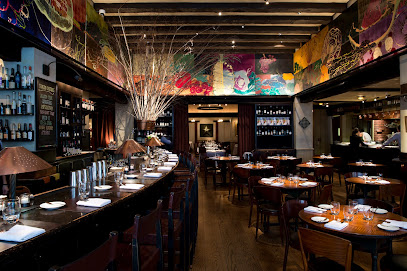
Eleven Madison Park
Experience the pinnacle of plant-based fine dining at Eleven Madison Park in Manhattan – where culinary artistry meets sustainability.
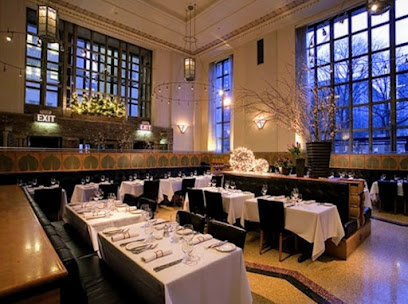
Upland
Discover Upland: A Culinary Gem in Manhattan Offering Exquisite Californian-Italian Dishes Amidst Chic Ambiance.
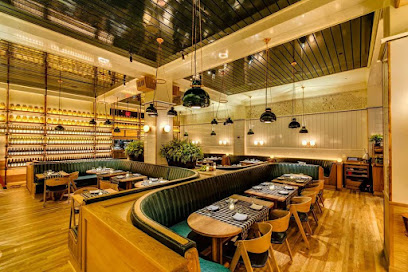
Per Se
Experience exquisite French fine dining at Per Se with stunning Central Park views and unforgettable culinary artistry.
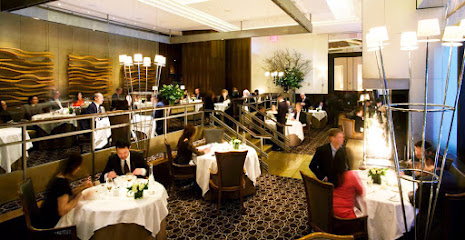
Craft
Experience Craft: Where Seasonal Ingredients Meet Modern American Cuisine in Manhattan's Fine Dining Scene.
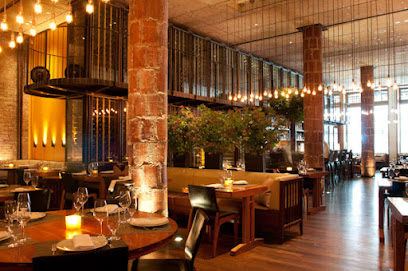
One if by Land, Two if by Sea
Discover romance and fine American cuisine at One if by Land, Two if by Sea - New York City's iconic dining gem.
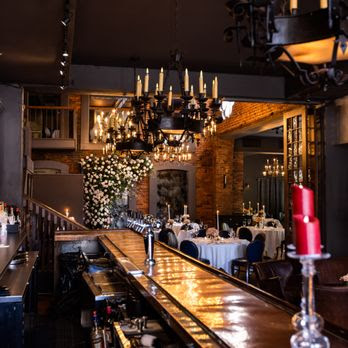
The Milling Room
Experience the essence of American cuisine at The Milling Room in Manhattan, where fresh ingredients meet innovative cooking.
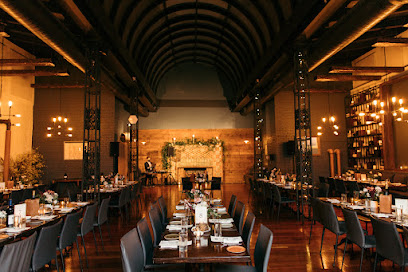
The Black Ant
Discover authentic Mexican cuisine with a modern twist at The Black Ant in Manhattan—an unforgettable dining experience awaits.
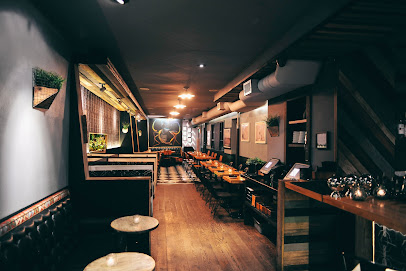
Hortus NYC
Experience unique Asian fusion flavors at Hortus NYC, where Korean culinary traditions meet modern innovation in Manhattan.
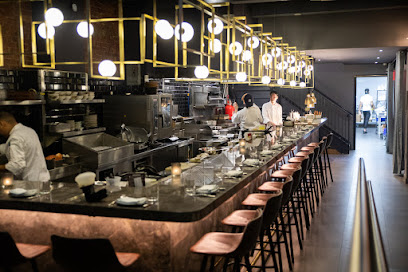
Markets, malls and hidden boutiques
Memories of New York
Explore unique gifts and souvenirs in the heart of Manhattan at Memories of New York, the perfect stop for tourists seeking mementos.
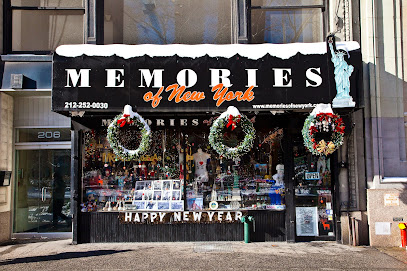
Grand Slam New York
Explore the heart of Manhattan at Grand Slam New York, your go-to gift shop for souvenirs, toys, and sporting goods in the city that never sleeps.
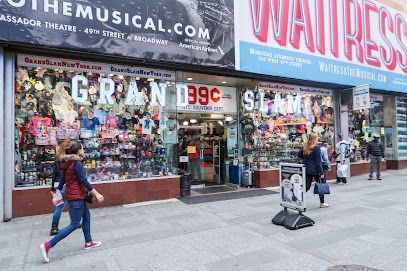
The Shop at NBC Studios
Explore unique souvenirs and NBC-themed gifts at The Shop at NBC Studios, a must-visit destination in the heart of New York City.
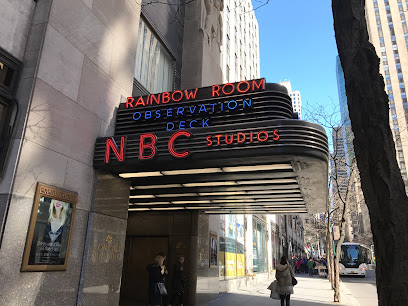
The Evolution Store
Explore The Evolution Store in Manhattan for unique gifts, natural wonders, and a perfect blend of art and science.

Souvenirs LLC
Discover unique New York souvenirs at Souvenirs LLC, a must-visit gift shop in Manhattan offering a wide selection of memorable keepsakes.
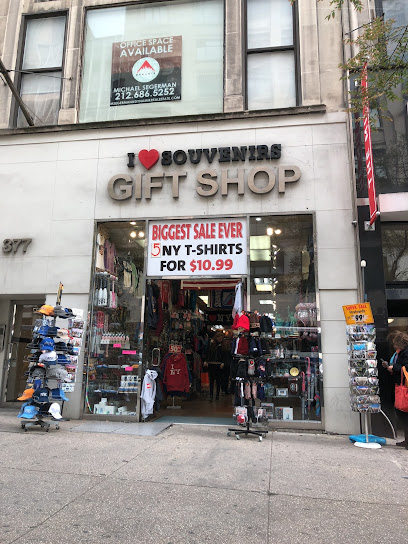
NiLu Gift Boutique
Explore the charm of NiLu Gift Boutique, where unique gifts and local crafts await every visitor in vibrant Harlem, New York City.
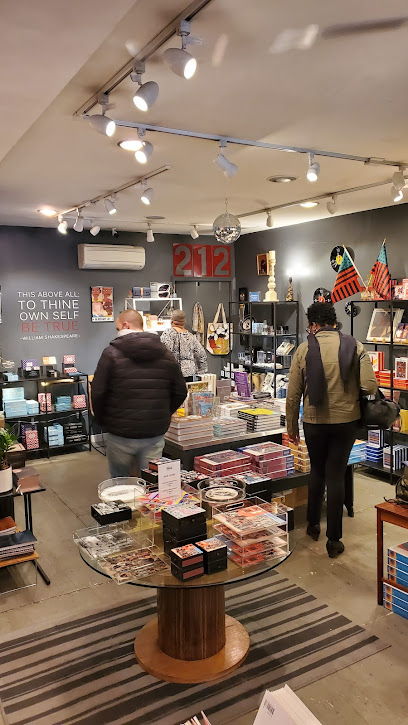
Exit9 Gift Emporium
Discover unique gifts and souvenirs at Exit9 Gift Emporium, a must-visit shop in Manhattan for all your shopping needs.
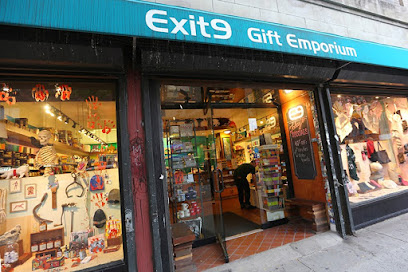
CityStore
Discover a treasure trove of unique gifts at CityStore, Manhattan's premier destination for NYC-themed souvenirs and local art.
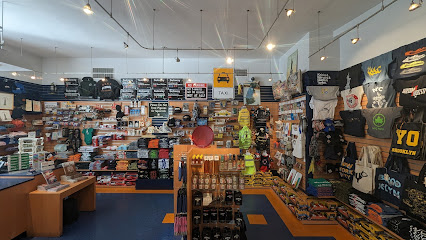
Random Accessories
Explore Random Accessories in Manhattan, your go-to gift shop for unique finds, baby essentials, and exquisite jewelry in the heart of New York City.
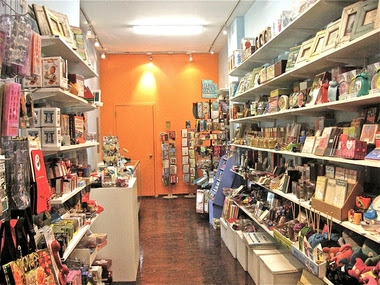
Cloak & Dagger
Discover timeless fashion and unique accessories at Cloak & Dagger, Manhattan's premier vintage clothing store, where every piece has a story.
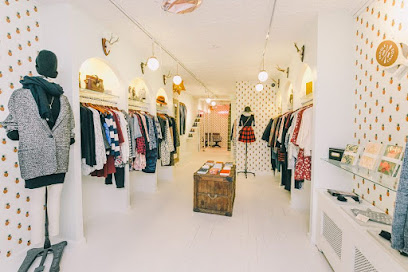
Essential bars & hidden hideouts
Tanner Smith's
Discover Tanner Smith's, a lively bar and gastropub in Manhattan, offering exquisite cocktails and innovative New American cuisine in an unforgettable atmosphere.
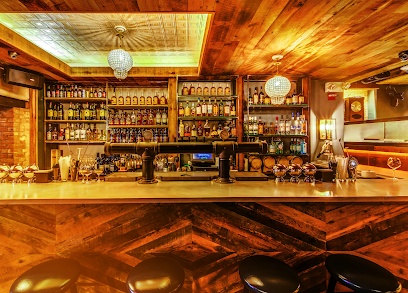
Please Don't Tell
Explore the secretive allure of Please Don't Tell, a premier cocktail bar in New York City's East Village, renowned for its artisanal drinks and intimate ambiance.
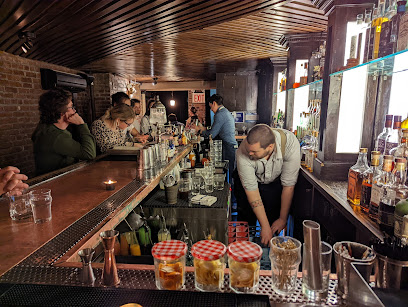
Attaboy
Experience the art of cocktail crafting at Attaboy, Manhattan's premier cocktail bar known for its bespoke drinks and intimate ambiance.
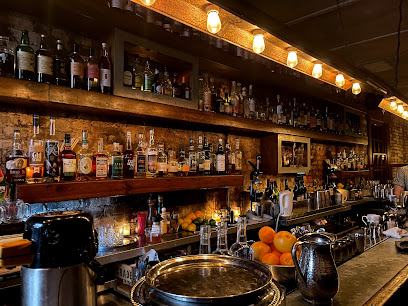
Old Town Bar
Discover Old Town Bar, a historic gastropub in Manhattan blending classic American dishes with an extensive drink selection in a charming atmosphere.
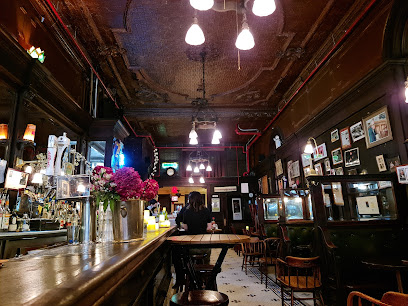
The Up & Up
Discover The Up & Up, a cocktail bar in Greenwich Village, where inventive drinks and a cozy atmosphere create unforgettable nights in New York City.
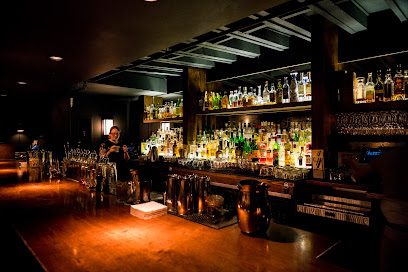
Patent Pending
Discover the art of mixology at Patent Pending, a cocktail bar in Manhattan known for its creative drinks and chic ambiance.
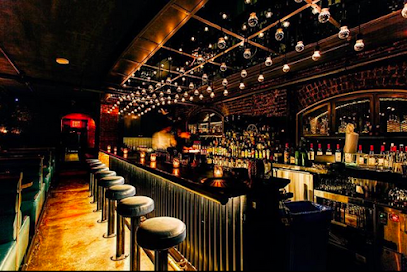
Raines Law Room at The William
Discover the enchanting Raines Law Room at The William, where artisanal cocktails meet exquisite small plates in a chic Manhattan setting.
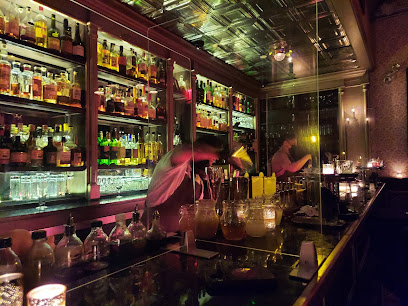
Bo Peep Cocktail and Highball Store
Discover the enchanting blend of live piano music and handcrafted cocktails at Bo Peep Cocktail and Highball Store in Manhattan.

Hidden Lane Bar
Experience the vibrant atmosphere of Hidden Lane Bar, a cozy bar and event venue in Manhattan, offering delightful cocktails and unforgettable events.
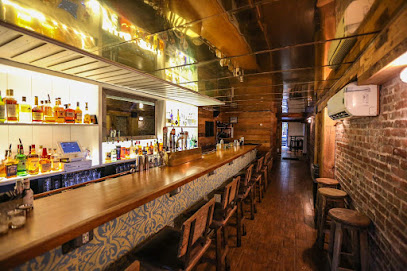
Strangelove Bar Nyc
Experience the vibrant punk-rock vibe of Strangelove Bar, a unique nightlife destination in Manhattan with eclectic drinks and an inviting atmosphere.
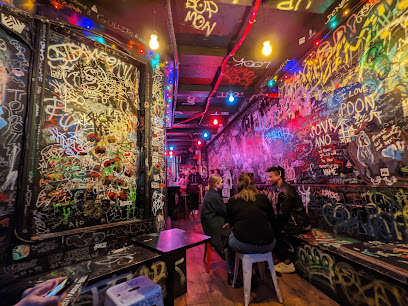
Local Phrases
-
- HelloHey
[hey] - GoodbyeLater
[lay-ter] - YesYeah
[yeah] - NoNah
[nah] - Please/You're welcomePlease/No problem
[please/no prob-lem] - Thank youThanks
[thanks] - Excuse me/SorryExcuse me/My bad
[ex-cuse me/my bad] - How are you?How you doin'?
[how you doin'] - Fine. And you?Good. You?
[good. you?] - Do you speak English?You speak English?
[you speak english?] - I don't understandI don't get it
[i don't get it]
- HelloHey
-
- I'd like to see the menu, pleaseCan I see the menu?
[can i see the menu?] - I don't eat meatI'm vegetarian
[i'm ve-ge-tar-i-an] - Cheers!Cheers!
[cheers!] - I would like to pay, pleaseCheck, please
[check, please]
- I'd like to see the menu, pleaseCan I see the menu?
-
- Help!Help!
[help!] - Go away!Get lost!
[get lost!] - Call the Police!Call the cops!
[call the cops!] - Call a doctor!Get a doctor!
[get a doctor!] - I'm lostI'm lost
[i'm lost] - I'm illI'm sick
[i'm sick]
- Help!Help!
-
- I'd like to buy...I wanna buy...
[i wanna buy...] - I'm just lookingJust browsing
[just browsing] - How much is it?How much?
[how much?] - That's too expensiveToo pricey
[too pri-cey] - Can you lower the price?Can you do a deal?
[can you do a deal?]
- I'd like to buy...I wanna buy...
-
- What time is it?What time is it?
[what time is it?] - It's one o'clockIt's one
[it's one] - Half past (10)Half past ten
[half past ten] - MorningMorning
[mor-ning] - AfternoonAfternoon
[after-noon] - EveningEvening
[even-ing] - YesterdayYesterday
[yes-ter-day] - TodayToday
[to-day] - TomorrowTomorrow
[to-mor-row] - 1One
[one] - 2Two
[two] - 3Three
[three] - 4Four
[four] - 5Five
[five] - 6Six
[six] - 7Seven
[seven] - 8Eight
[eight] - 9Nine
[nine] - 10Ten
[ten]
- What time is it?What time is it?
-
- Where's a/the...?Where's the...?
[where's the...?] - What's the address?What's the address?
[what's the address?] - Can you show me (on the map)?Can you show me (on the map)?
[can you show me (on the map)?] - When's the next (bus)?When's the next (bus)?
[when's the next (bus)?] - A ticket (to ....)A ticket (to ....)
[a ticket (to ....)]
- Where's a/the...?Where's the...?
History of Manhattan
-
Long before European settlers arrived, the area now known as Manhattan was inhabited by the Lenape people, who thrived on the rich resources of the land. They engaged in fishing, hunting, and agriculture, establishing a deep connection to the area's natural environment.
-
In 1624, the Dutch established a trading post called New Amsterdam on the southern tip of Manhattan. This marked the beginning of European colonization, driven by trade in furs and other resources. The strategic location of the settlement on the Hudson River facilitated commerce and interaction with Indigenous peoples.
-
The British seized control of New Amsterdam in 1664, renaming it New York in honor of the Duke of York. The transition brought significant changes to the governance and culture of Manhattan, shaping its trajectory as a prominent colonial city and an essential hub for trade.
-
Manhattan played a crucial role during the American Revolution, serving as a battleground and a strategic location for both British and American forces. The British occupation of the city from 1776 to 1783 had lasting effects on its development and subsequent political landscape.
-
The 19th century witnessed a massive influx of immigrants, particularly from Ireland and Germany, transforming Manhattan into a melting pot of cultures. This period saw rapid urbanization, the development of iconic neighborhoods, and the establishment of cultural institutions that reflect the diverse heritage.
-
By the late 19th and early 20th centuries, technological advancements and economic growth led to the construction of iconic skyscrapers in Manhattan. The Flatiron Building, completed in 1902, and the Empire State Building, finished in 1931, symbolized the architectural innovation and ambition of the city.
-
The 20th century marked a cultural renaissance in Manhattan, becoming a global center for arts, theater, and music. The Harlem Renaissance in the 1920s celebrated African American culture and arts, while Broadway emerged as the epicenter of American theater, influencing entertainment worldwide.
-
The terrorist attacks on September 11, 2001, profoundly impacted Manhattan and the world. The destruction of the World Trade Center led to significant loss and trauma but also sparked unity and resilience among New Yorkers. The site of the attacks has since been transformed into the National September 11 Memorial & Museum, honoring the victims and educating future generations.
-
Today, Manhattan is a dynamic urban center that continues to evolve. It represents a blend of history and modernity, where historic neighborhoods coexist with cutting-edge architecture, and diverse cultures contribute to a vibrant community. From Wall Street's financial power to the artistic pulse of SoHo, Manhattan remains a pivotal part of New York City’s identity.
Manhattan Essentials
-
Manhattan is easily accessible from other neighborhoods in New York City. The subway system is the most convenient, with multiple lines connecting to various boroughs. You can take the 1, 2, 3, A, C, E, N, Q, R, or W trains to reach different parts of Manhattan. Buses also operate extensively throughout the city, providing another option to reach Manhattan. For those coming from outside NYC, major train stations like Penn Station and Grand Central Terminal connect to Amtrak and regional trains. Airports such as JFK, LaGuardia, and Newark offer shuttle services and taxis into Manhattan.
-
Once in Manhattan, the subway is one of the fastest ways to get around, with extensive coverage and 24-hour service. Buses are also available, and the MTA provides real-time updates on schedules. For a more scenic route, consider using Citi Bike, New York's bike-sharing program, which has stations all over the borough. Taxis and rideshare services like Uber and Lyft are plentiful, but traffic can be heavy, especially during peak hours. Walking is highly recommended in many areas, especially in neighborhoods like Greenwich Village and the Financial District.
-
Manhattan is generally safe for tourists, but it is wise to remain vigilant. Areas with higher crime rates include parts of Harlem and the Lower East Side, particularly at night. Avoid displaying valuables and be cautious in crowded places like Times Square and subway stations, where pickpockets may operate. It's best to stay alert and trust your instincts; if a situation feels off, it's okay to leave.
-
In case of an emergency, dial 911 for police, fire, or medical assistance. Locate the nearest hospital or urgent care facility, as many are available throughout Manhattan. Keep a list of important contact numbers and have travel insurance that covers emergencies. If you lose your belongings, report it to the police and your hotel.
-
Fashion: Do wear comfortable shoes for walking, as you'll be on your feet a lot. Don't wear overly flashy or expensive jewelry that may attract unwanted attention. Religion: Do be respectful at religious sites, such as St. Patrick's Cathedral. Don't take photos where it is prohibited. Public Transport: Do keep your belongings secure and be aware of your surroundings. Don't block the doors or shout on public transport. Greetings: Do use a friendly tone and smile when interacting with locals. Don't interrupt conversations or invade personal space. Eating & Drinking: Do try local favorites like bagels and pizza. Don't eat on public transport; it's frowned upon.
-
To experience Manhattan like a local, explore neighborhoods such as the Lower East Side for trendy eateries and boutiques. Visit local markets, like the Chelsea Market, for a variety of food options. Attend free events in parks such as Central Park and Bryant Park, and consider taking advantage of 'pay-what-you-wish' museum days. Engage with street performers and local artists, and try to learn a bit of NYC slang to blend in. Lastly, be open to exploring beyond iconic sites to discover hidden gems.
Nearby Cities to Manhattan
-
Things To Do in New York City
-
Things To Do in Jersey City
-
Things To Do in Yonkers
-
Things To Do in Paterson
-
Things To Do in White Plains
-
Things To Do in Greenwich
-
Things To Do in Stamford
-
Things To Do in Red Bank
-
Things To Do in Norwalk
-
Things To Do in Asbury Park
-
Things To Do in Long Island
-
Things To Do in Bridgeport
-
Things To Do in Danbury
-
Things To Do in Milford
-
Things To Do in Trenton


